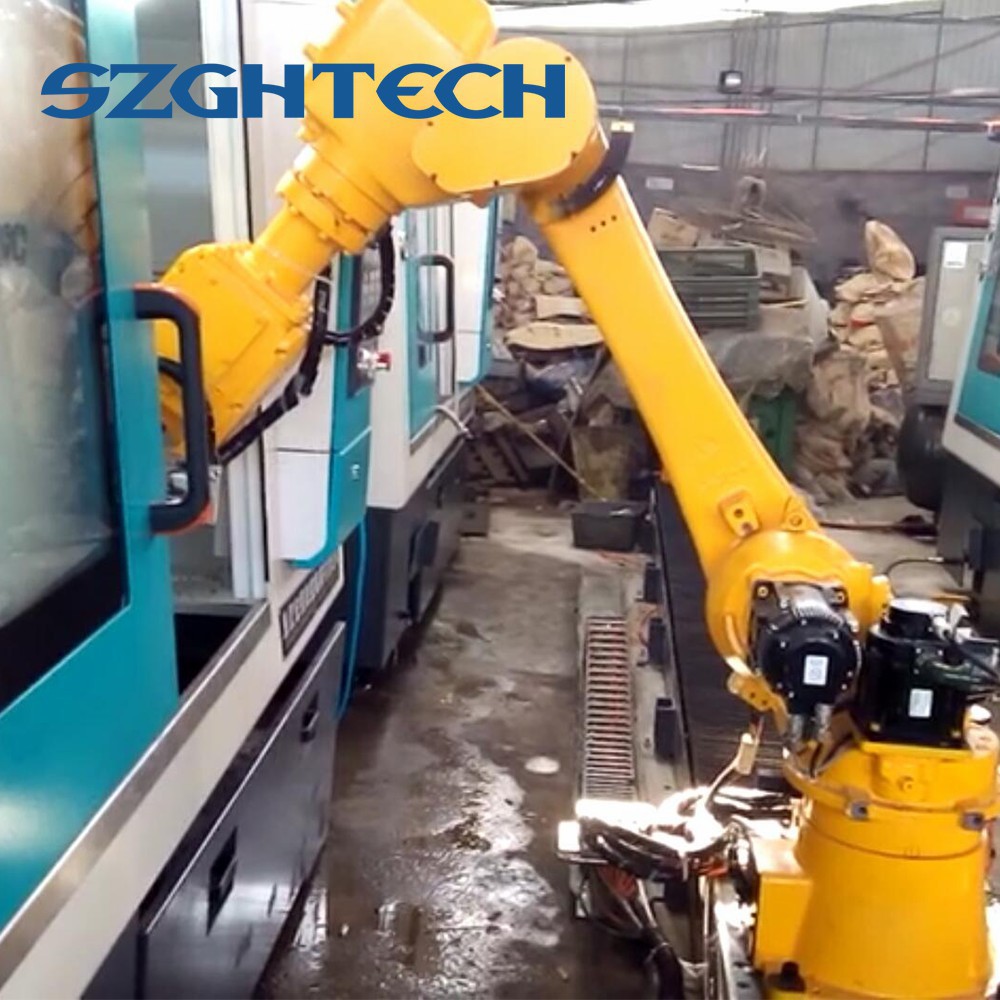Industrial robot arms can work in tandem with lathe machines to automate production in several ways:
1. Loading and Unloading: Robot arms can be used to load and unload workpieces into and out of the lathe machine. They can pick up raw materials from a pallet or conveyor system and place them accurately into the lathe's chuck or fixture. Once the machining process is complete, the robot arm can remove the finished parts and place them in designated locations, such as bins or trays.
2. Tool Changing: Robot arms can perform tool-changing operations on the lathe machine. They can swap out worn or broken tools with new ones from a tool magazine or storage area. This eliminates the need for manual tool changes, reduces downtime, and ensures continuous operation.
3. Inspection and Quality Control: Robot arms can be equipped with sensors and cameras to perform inspection and quality control tasks. They can pick up finished parts from the lathe machine and inspect them for dimensional accuracy, surface finish, or other quality criteria. The robot arm can sort the parts based on the inspection results, segregating any defective pieces.
4. Auxiliary Operations: Robot arms can assist with auxiliary operations that are required during or after lathe machining. For example, they can perform deburring, cleaning, or polishing operations on the machined parts. This eliminates the need for separate workstations and manual handling, streamlining the production process.
5. Integration and Coordination: The robot arm can be integrated with the lathe machine's CNC system, enabling seamless coordination between the two. This allows for synchronized movements and precise positioning of the workpiece during machining and handling operations. The robot arm's actions can be programmed and synchronized with the lathe machine's operations, ensuring efficient and accurate production.
6. Workflow Optimization: By integrating robot arms with lathe machines, manufacturers can optimize the workflow and minimize idle time. The robot arm can perform tasks in parallel with lathe machinings, such as material preparation or post-processing, reducing overall cycle times and increasing productivity.
7. Safety and Ergonomics: Robot arms improve safety and ergonomics by reducing the need for manual handling of heavy or hazardous workpieces. They can handle large or bulky parts with ease, reducing the risk of injuries to human operators. This also allows operators to focus on supervising and programming tasks, enhancing workplace safety.
 |
 |

